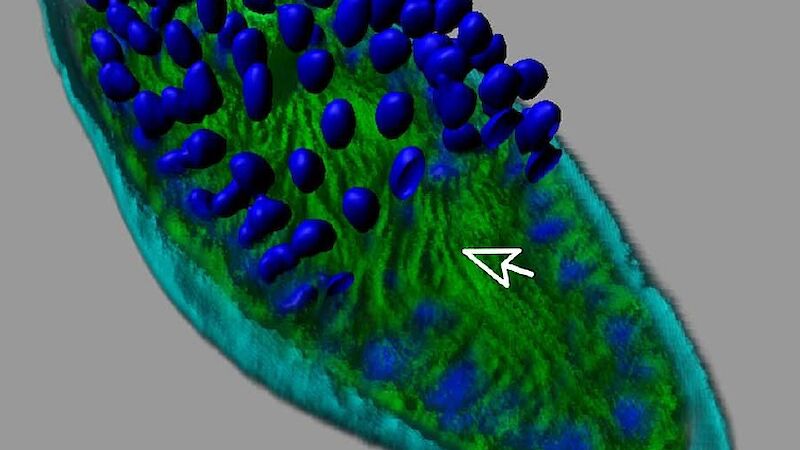The Southern Ocean is swarming with plankton-killing parasites, according to new research published in the Journal of the International Society for Microbial Ecology (ISME).
Using a high-throughput DNA sequencing technique, Australian scientists have discovered that a largely unknown Syndiniales parasite is unexpectedly abundant in waters around Antarctica.
Dr Laurence Clarke from the Antarctic Climate and Ecosystems Cooperative Research Centre said the parasite attacks other microscopic organisms at the base of the Southern Ocean food web.
“These parasites are a natural part of ocean biology, but our research has shown they are super-abundant in the ocean surrounding Antarctica,” Dr Clarke said.
“Up to half of the DNA in water samples from the ice edge was from a single type of plankton parasite, which suggests we are underestimating their influence in the food chain.”
Although tiny, plankton are a critically-important part of the Southern Ocean food chain because they provide nutrition to species throughout the entire marine food web.
When plankton parasites infect and kill their host, they rob higher order species like krill of a potential source of nutrition.
Dr Clarke said the discovery might change how we understand the microscopic life and death struggles in the ocean around Antarctica.
The discovery was made using a technique known as high-throughput DNA sequencing, which can massively speed up the process of identifying different species in a water sample.
“The parasites are virtually undetectable with a microscope, but by looking at the DNA we can detect parasites inside a cell, or parasite spores too small to identify with a microscope,” Dr Clarke said.
“High-throughput DNA sequencing now gives us the ability to explore microbial biodiversity in the ocean with unprecedented speed and accuracy.”
The research is a collaboration between researchers from the Australian Antarctic Division, CSIRO, the University of Tasmania and the Antarctic Climate & Ecosystems Cooperative Research Centre.

